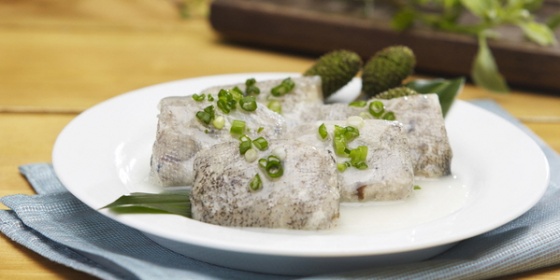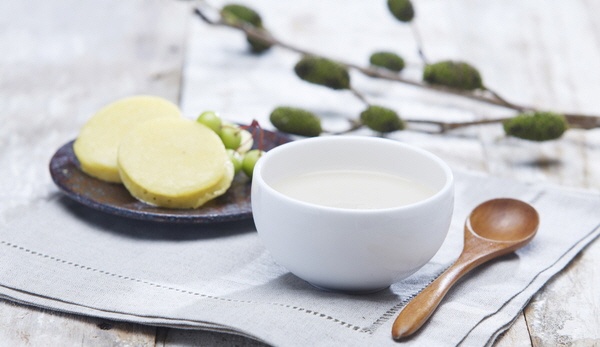(Meida1=William Harlow) Korean cuisine has a lot going for it. It is very healthy food. During the Korean War, doctors had the opportunity to observe American and Korean casualties side by side. They noticed that an 18 year old American already had signs of coronary disease while the Korean soldiers’ arteries were clear. This showed and early link between diet and heart disease that is now taken for granted. The Korean diet, rich in vegetables, is very healthy. Kimchi, a Korean staple, is extremely nutritious and healthy and has been listed by the United Nations as one of the best overall food. So why has Korean cuisine been slow to catch on?
First, western diets are meat, dairy, and grain centric. A vegetable heavy diet is still hard to sell. Second, Korean cuisine takes time to prepare and is geared toward a collective dining experience. Korean cuisine is also largely based on heavy soups. Called jigae, these soups are served in warmed iron bowls and come in many varieties. Some are spicy, some are not; however, they are physically hot and contain vegetables, tofu, meat, seafood, depending on the type and can be compared to a stew.
Accompanying the jigae are as many as ten different small dishes of prepared vegetables such as kimchi, bean sprouts, seasonal green’s, and other available vegetables. Some small dishes may also contain fish. Lastly, a small bowl of white rice will come with your meal. I like to put some soup broth and veggies in my rice to add flavor. The issue is, even for a simple meal like jigae, takes a lot of specialized dishes to make the meal and is not as easy to serve or package as is other types of cuisine.

Kimchi is a Korean stable. There is no one type of Kimchi. It is made out of cabbage, cucumbers, radishes, turnips, or any other type of vegetable. Kimchi is basically a way of pickling the food to preserve it and everyone has their own recipe. Kimchi can be an acquired taste. Sometimes it is spicy hot with a big after burn. Some types are mild. Most people with a western palette prefer the mild form. Still, it is not a Korean meal without some form of Kimchi.
The next aspect of Korean cuisine familiar to westerners is Korean barbeque. Again, there are varied types. Most famous is Bulgogi (Bul meaning fire and gogi meaning meat). This is thin slices of marinated meat mixed with a variety of vegetables. Served with rice it is delicious and can be cooked at the table or served on a plate as a single serving and is probably the most flexible of the Korean barbeque dishes. Another is gui or spicy hot cooked meat. My favorite gui is pork (dwaji gogi kochugang gui pronounce taeji gogi kochugang gooey). It consists of cooked pork meat, potatoes, and other vegetables in a hot sauce. This is very spicy and can make you sweat while you are eating it so be ware.

Just as popular is kalbi or ribs. Normally served at specialty restaurants, the ribs are sliced into thin strips of beef (Seo, pronounced So) or pork (dwaji, pronounced taeji). Chicken (daulk) is also used; however, this is mostly done as a regional specialty near Chuncheon and is a different cut of meat compared to the Beef or Pork. The tables at kalbi restaurants are specially designed to have a grill in the center with exhaust fans overhead. The marinated meat arrives and you cut it into small pieces using scissors and place it on the grill. You cook your own meat. In addition to the meat you get leafy vegetables such as lettuce and sesame leafs to wrap the cooked meat in.

Additionally, there may be cabbage salad, kimchi, garlic, sauces, and few other veggies in small dishes. You can also order a bowl of rice separately. The trick is you put the leafy vegetable in the palm of your hand. Pick up a cooked piece of meat from the grill, dip it in some sauce and place it on the leaf. Add garlic (you can dip in red pepper paste), rice and other veggies and add these to the top of the leaf as well. Roll the entire thing up into a ball and stuff it in your mouth. It is absolutely delicious. The western nickname for this meal is “Beef on a Leaf”. Unlike the bulgogi that you can make anywhere, kalbi is best enjoyed in specialized restaurants. This limits its proliferation.
Korean cuisine also included lots of seafood. My favorite is the grilled fish. In the United States, most seafood is fried. Not so in Korea. Many varieties of fish are available and grilled. They are served with the small dishes of veggies again and rice. Getting around the bones with chop sticks can be a challenge; however, with practice, the bones become less of an issue.
Additionally, many types of seafood are used in heavy soups (jigae again). These are hot (tugopda) and spicy (mepda). One thing to be wary of is the variety of seafood eaten. Koreans eat eel, octopus, sea urchins, seaweed, and untold other seafood. While I like the fish and seafood soups, I find octopus to rubbery and other types of seafood culturally unappetizing.
2nd Article to be followed




![[기획시리즈 | 한국사회와 노인] ② 창업이 아니라 추락이었다](https://media1.or.kr/wp-content/uploads/2025/06/A꾸미기85c7f0e2-cc2b-466a-b0f4-467a3300eb10-100x70.jpg)





